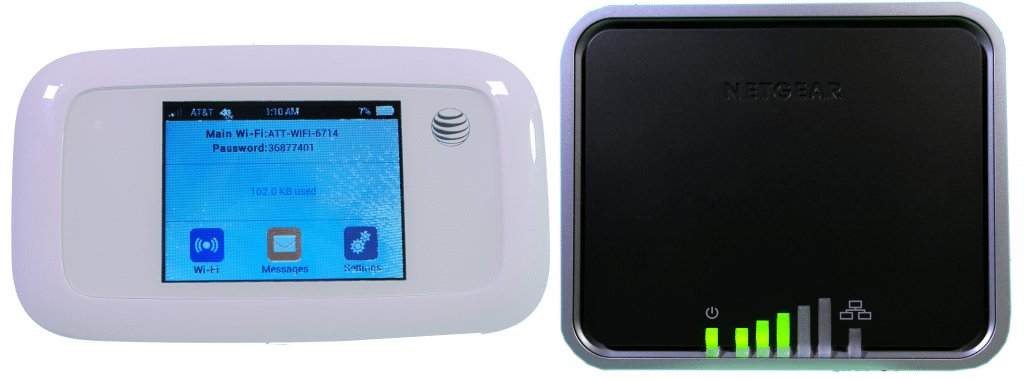ZTE Velocity vs. Netgear LB1120: An In-Depth Comparison
Having internet at our fingertips has become an expectation for many. Whether it’s on demand entertainment or the ability to work mobile, 4GLTE technology has made consistent and unlimited Wi-Fi as easy for you as pushing a button.
Depending upon where and how you want to use the internet, there are some options available when it comes time to choose the equipment you’ll use with your Unlimited LTE Advanced internet access. In this article we will look at device features and do a comparison of two similar yet quite different solutions for wireless internet service. We will also give you some pros and cons for each device. First, we will go over the ZTE Velocity hotspot, designed to deliver 4GLTE Data over Wi-Fi, and then we will describe the Netgear LB1120 4G LTE modem, designed to deliver internet over an ethernet cable.
ZTE Velocity Hotspot
The ZTE Velocity is about the size of a deck of cards. The device has an LCD touchscreen that you can use to configure the Wi-Fi and device settings, view data usage, and retrieve messages. You can also personalize your hotspot and change some of the basic settings from the touchscreen. And, with a glance you can monitor signal strength, network status, and battery life.
If portable internet is what you need, then this hotspot fits the bill. The velocity Wi-Fi uses 802.11 a/b/g/ and n standards and gives you the ability to pick a 2.4 or 5 GHz band. This allows you to optimize Wi-Fi for different conditions. The Velocity goes where you go. Carry the device in your vehicle and up to ten passengers can log on and hit the web. You can also connect one other hand-held device with USB tethering.
You can bring your hotspot to the café for an impromptu brainstorming meeting or to a coffee spot for a homework session. And after work is done, you can entertain the troops with a movie from your online streaming service via your laptop, handheld device, or smart TV. And, if you have a device that requires an ethernet connection, a simple Wi-Fi extender with an ethernet port will provide that connection.
The ZTE Velocity hotspot boasts an average 10-hour battery life with a removable battery. It also comes with a 110-volt power converter and the ability to run on a car charger (purchased separately). The device supports LTE bands 2,4,5,17, & 29 as well as LTE advanced carrier aggregation (2X 10 MHz channels). For the layperson, this means the device can process max theoretical speeds of 150Mbps down and 50 Mbps up and will handle any of our plans. In summary, the Velocity Hotspot from ZTE is a sleek device with a clear record of solid performance and durability. And with a manufacturer’s suggested retail price of $149, the device is affordable. though better deals are available on refurbished devices or deep discounts on new and open box models from providers with the purchase of a plan.
Netgear LB1120
Netgear has three 4G LTE modems that have identical chipsets, but each offers different connection and power options. The LB1120 is the basic model that powers off an included wall or optional car charger and provides 1 Ethernet LAN port. The LB1120 has POE (power over ethernet) capability which eliminates the need for a separate power supply for a smaller device, instead, power is available over the ethernet connection. There is also the LB2120, which is very similar to the 1120, but it offers an additional ethernet WAN port, allowing it to be installed in-line between a typical DSL or cable modem and a router or switch to provide redundancy back up or load balancing capabilities.
The LB1120 modem is unimposing at its 4.7”x 3.9” x 1.2” size, but don’t be fooled into believing this compact wireless modem has small performance. The LB1120 supports LTE bands 2,4,5,12 & 17 to give the same category 4 LTE performance as the ZTE Velocity (capable of 150 Mbps down and 50Mbps up).
As stated before, the biggest difference between the LB1120 and the ZTE Velocity hotspot is that the Velocity doesn’t have an Ethernet port and the LB1120 doesn’t provide Wi-Fi. This doesn’t mean that you can’t have Wi-Fi with the LB1120, it’s just that you will need have your modem connect to a wireless router to get Wi-Fi. While the LB1120 is a capable component used to build portable solutions for RV’s, semi trucks, or mobile points of sale, most users are deploying the LB1120 with a wireless router in rural homes or businesses where cable and DSL solutions are limited, non-existent or unaffordable. But, when you need a portable but ethernet wired solution, the LB1120 can be powered by any wired 12 V, 1.0 Amp power source, like a car charger or other suitable source.
One advantage the LB1120 has over the Velocity hotspot is the ability to add an external antenna through 2 MIMO/TS9 antenna ports. This can greatly improve the reception of the 4G signals in remote areas, as you can add anything from the simplest flat window antenna up to a tower-mounted omnidirectional or directional antenna with a signal booster, depending on your location needs. At the end of the day, your decision on which of these devices will best meet your needs should depend upon your unique situation. The best choice will be one that is based upon how and where you want to be connected to the internet and why. Ultimately, you may find, as many others have, that the best decision is (if it fits your budget), to get the best of both worlds and buy one of each.

Mike Meyer serves as the Vice President of Marketing at Unlimited LTE, where he leads the charge in delivering innovative communication solutions to those who need them most—rural communities and people whose lives keep them constantly on the move. With nearly a decade at Unlimited LTE and over 40 years of combined industry experience across his team, Mike is deeply passionate about bridging the digital divide. For him, it’s not just about connectivity—it’s about unlocking opportunity and improving lives through better, smarter access to the world.




